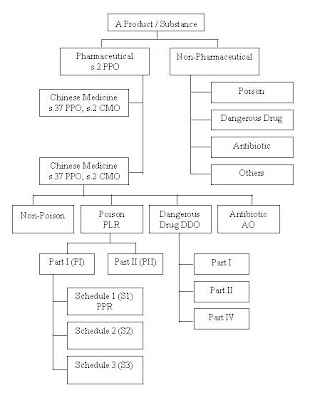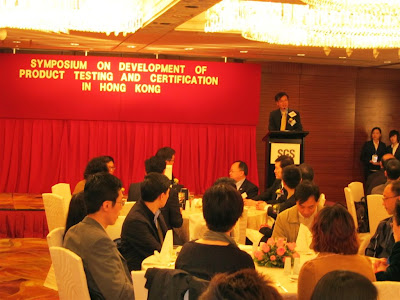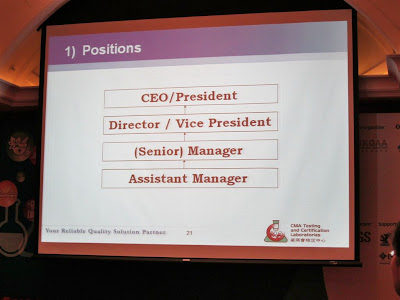The content included "Control of Antibiotics”, “Wholesale & Retail Sale of Poisons” and “Undesirable Medical Advertisements”.

Control of antibiotics in Hong Kong is governed by Antibiotics Ordinance (AO), Cap.137. The ordinance stated:
1. Substances to which the AO, Cap 137 applies
2. Control of Antibiotic Substances (Sale & Supply; Possession)
3. Permits to Deal in and to Possess Antibiotic
4. Maintenance of Records
5. Offences & Penalties ($5000; $30000 & to imprisonment for 12 months)
The following Substances were controlled under Cap.137:
- Septrin (P1S1S3), Nitrofurantoin (non-poison), Trimethoprim (P1S1S3), Metronidazole (P1), Nalidixic acid (P1S1S3) and Synalar N cream (P1S1S3, A), where Poison code – (P1S1S3) and Antibiotic (A).
For treatment, registered medical practitioner, registered dentist, registered veterinary surgeon, registered pharmacist or Authorized Seller of Poisons (ASP) under the authority of a prescription, signed & dated by a registered medical practitioner can sell or supply antibiotics.
There are only two permits to deal in and to possess Antibiotic Substances.
i) The Director of Health or any person authorized by him may issue a written permit to deal in antibiotic substances.
ii) The Director of Agriculture, Fisheries and Conservation may issue to any person a written permit to possess for the purposes of veterinary treatment.
Records shall be maintained and included:
- Name & address of person from whom received or to whom supplied (permit number if applicable)
- Quantity received or supplied
- Date received or supplied
Then Pharmacy and Poisons Ordinance (Cap. 138) was briefed. The poisons classification chart was shown.
 Where A – Medicinal and B – Non-medicinal (e.g. cyanides); Listed Seller of Poisons (LSP) and Authorized Seller of Poisons (ASP)
Where A – Medicinal and B – Non-medicinal (e.g. cyanides); Listed Seller of Poisons (LSP) and Authorized Seller of Poisons (ASP)LSP sale of part II Poisons are:
- Manufacturer’s original container
- No dispensing of prescription
ASP sale of Part I Poisons are:
- By a registered pharmacist; or
- In his/her presence and under his/her supervision
Under the 1971 Convention of Psychotropic Substances, the following items were requested.
- Maintain records showing the receipt, sale or supply of stock in hand in a specified format
- Supported in every case by invoice, order note or other voucher
(Full list in www.psdh.gov.hk → Application Guideline → Pharmaceutical Wholesale/Retail Licenses → Wholesale Poisons License)
The summary of retails sale of different poison is shown in the following table.
Holders of Wholesale Poisons Licence (WPL) and Licence for Manufacturer (ML) cannot sell poisons by retail, to members of public.
WPL or Wholesale dealer in medicines not containing poisons shall set up and maintain a recall system that will enable rapid and complete recall of any lot or batch or a pharmaceutical substance / product from sale to the public in the event of the pharmaceutical substance or product being found to be dangerous or injurious to health. (r.28(8))
WPL or Wholesale dealer in medicines not containing poisons shall set up and maintain a recall system that will enable rapid and complete recall of any lot or batch or a pharmaceutical substance / product from sale to the public in the event of the pharmaceutical substance or product being found to be dangerous or injurious to health. (r.28(8))
Undesirable Medical Advertisement Ordinance (UMAO) (Cap. 231) was introduced. The intention of the ordinance aims to protect the public from being induced by such advertisements to seek improper treatment from unqualified persons or to resort to wrongful application of self-medication, with the result that there is delay in seeking proper treatment, making the disease much more difficult to cure.
Its amendment enacted on 29 June 2005 and Gazetted on 8 July 2005 (www.gld.gov.hk/egazette). It applies to “orally consumed product” included the following forms:
- pill, capsule, tablet, granule, powder, semi-solid, liquid, or a form similar to any of the forms mentioned above; and does not include a product which is customarily consumed only as food or drink or to satisfy a desire for taste, texture or flavour.
For more information:
Guideline on the labeling for registration of pharmaceutical products at www.psdh.gov.hk
Report on the review committee on regulation of pharmaceutical products in Hong Kong at http://www.fhb.gov.hk/
Guidelines on the UMAO (Cap. 231) at http://www.fhb.gov.hk/
Guidelines on the UMA (Amendment) Ordinance 2005 regarding “Orally Consumed Products” and Schedule 4 at http://www.fhb.gov.hk/




.JPG)

















































